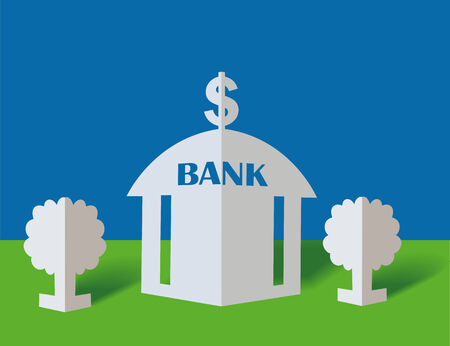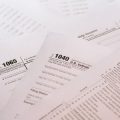Understanding the Emergency Fund Concept in the U.S. Context
In the United States, the concept of an emergency fund is a foundational element of personal financial planning. An emergency fund refers to a dedicated pool of money set aside specifically for unexpected expenses such as medical emergencies, urgent home or car repairs, or sudden job loss. For American households, building and maintaining this financial buffer is especially crucial due to the country’s unique economic landscape. Unlike some other developed nations, the U.S. does not offer universal healthcare or extensive social safety nets, leaving families more exposed to surprise costs that can quickly derail financial stability. Additionally, with high levels of consumer debt and variable job markets, U.S. families face increased risks of income disruption and unplanned expenses. An effective emergency fund helps mitigate these risks by providing immediate liquidity without resorting to high-interest credit cards or loans. Understanding how much to save—and why this buffer matters—sets the stage for evaluating common rules of thumb and what truly works for American households.
2. Standard Emergency Fund Rules of Thumb: An Overview
When it comes to financial planning in the United States, a commonly cited piece of advice is to maintain an emergency fund that covers three to six months of living expenses. This rule of thumb has become deeply embedded in American personal finance culture, often recommended by financial advisors, consumer advocacy groups, and even government agencies. But why has this benchmark become the go-to standard for so many households?
Origins of the Three to Six Months Rule
The three to six months guideline is rooted in practical risk management. The idea is simple: if you lose your primary source of income or face an unexpected expense—such as a major car repair or medical bill—having a cushion can help you avoid debt and maintain stability while you recover. This range accounts for the typical length of time it might take an average American worker to find new employment or resolve a significant financial disruption.
Common Benchmarks at a Glance
| Emergency Fund Benchmark | What It Covers | Who It’s For |
|---|---|---|
| 3 months of expenses | Short-term job loss, minor emergencies | Dual-income households, stable jobs |
| 6 months of expenses | Longer unemployment, major emergencies | Single-income families, less stable work |
| 12 months of expenses | Extended disruptions (health, economy) | Self-employed, high-risk sectors |
Why These Figures Have Stuck Around
The popularity of these benchmarks comes down to their simplicity and adaptability. A three-month fund provides a basic safety net for those with lower risk profiles or multiple sources of income. Six months is considered a prudent choice for most Americans, especially those with dependents or single incomes. For high-risk situations—such as self-employment or volatile industries—a full year’s worth of reserves may be warranted. Financial experts continue to recommend these figures because they balance accessibility (not too daunting to save) with real-world protection against common life events.
![]()
3. When the Rules Work: Who Benefits from Traditional Guidelines
The classic emergency fund rule of thumb—saving three to six months’ worth of living expenses—can be highly effective for certain American households, particularly those with stable financial and employment situations. In these cases, the traditional guidelines provide a reliable safety net without unnecessarily tying up excess cash that could otherwise be invested or used for other financial goals.
Dual-Income Families
Households with two earners often benefit most from standard emergency fund advice. When both partners have steady jobs, the risk of simultaneous job loss is relatively low. This means that if one partner loses their income, the household can often manage on the remaining salary while drawing down savings as needed. For these families, a fund covering three months of expenses is usually sufficient to bridge the gap until new employment is secured.
Salaried Workers with Predictable Income
Americans working in salaried positions, especially within established companies or sectors less prone to volatility, are well-suited to follow conventional emergency savings rules. Their income predictability reduces the likelihood of sudden financial shocks. In these scenarios, adhering to the three-to-six-month guideline strikes a reasonable balance between preparedness and liquidity.
Stable Housing Situations
Renters or homeowners with long-term leases or fixed-rate mortgages also find traditional rules effective. Stable housing costs make it easier to forecast necessary emergency fund amounts and minimize unexpected spikes in monthly obligations. This predictability enables households to set aside an appropriately sized fund without overestimating their needs.
Summary: Why These Groups Fit the Mold
For dual-income families, salaried professionals, and those with predictable housing expenses, traditional emergency fund advice works because their risks are lower and more manageable. The classic rule provides peace of mind and financial resilience without locking away too much capital—making it a pragmatic approach for many middle-class American households.
4. Limitations: When the Rules Don’t Fit U.S. Households
While emergency fund rules of thumb—such as saving three to six months’ worth of expenses—offer a straightforward guideline, they don’t always suit every American household. Diverse financial realities across the United States mean that these traditional guidelines can fall short, especially for those outside of stable, salaried employment or with unique family needs.
Gig Workers and Freelancers
For gig workers, freelancers, and contractors, income is often irregular and unpredictable. Standard emergency fund recommendations may underestimate their actual needs during periods without work or when facing delayed payments. Gig economy participants might benefit from larger cash reserves to weather prolonged downturns.
Sole Breadwinners and Single-Income Families
Households relying on a single earner are inherently more vulnerable to income shocks. For these families, losing the primary source of income means no backup. Thus, a larger emergency fund—perhaps nine months or more of expenses—could be more appropriate.
Comparison Table: Emergency Fund Needs by Household Type
| Household Type | Traditional Guideline | Recommended Adjustment |
|---|---|---|
| Salaried Employee (Dual-Income) | 3–6 months | No major change |
| Sole Breadwinner | 3–6 months | 6–9+ months |
| Gig Worker/Freelancer | 3–6 months | 6–12 months |
| High Medical Expenses Family | 3–6 months | Add 1–2 months’ medical costs |
| Recent Immigrants/New to U.S. | 3–6 months | Adjust for lack of social safety nets and job instability |
Families with High Medical Costs
American households facing chronic health issues or high medical bills should consider factoring in extra savings for ongoing treatments, deductibles, and non-covered expenses. Traditional formulas rarely account for these outliers in monthly costs, leaving such families exposed.
Recent Immigrants and Newcomers to the U.S.
Recent immigrants often lack established credit histories, support networks, or access to government benefits. They may also face greater job instability or discrimination in the labor market. For these groups, standard emergency fund advice should be recalibrated to reflect higher initial vulnerability and potential delays in finding reliable employment.
The Bottom Line: One Size Doesn’t Fit All
The classic rules of thumb serve as a useful starting point but ignore the complexity of modern American life. Customizing your emergency fund based on your household structure, employment type, health needs, and personal circumstances will provide a much stronger financial safety net when it matters most.
5. Adapting Emergency Fund Targets: A Data-Driven Approach
Moving Beyond One-Size-Fits-All Rules
Traditional emergency fund rules of thumb—such as saving three to six months’ worth of expenses—are easy to remember but often miss the nuances of real American households. Research from the Federal Reserve and Pew Charitable Trusts highlights that income volatility, household size, and health risks dramatically influence a family’s financial resilience. So, instead of sticking rigidly to generic targets, a more personalized, data-driven approach is essential.
Factoring in Income Volatility
For households with steady, salaried income, a basic emergency fund equal to three months’ expenses might suffice. However, gig workers or those in industries like retail or hospitality face higher income unpredictability. According to the JP Morgan Chase Institute, families with volatile incomes can experience monthly swings up to 30%. For these Americans, targeting at least six months—or even more—of living expenses provides a better safety net against unexpected drops in earnings.
Adjusting for Household Structure
Family structure also plays a major role in setting an emergency fund target. Single-income households and families with dependents are at greater risk if the primary earner loses their job or faces a medical emergency. The Consumer Financial Protection Bureau (CFPB) recommends that single parents or sole breadwinners aim for a larger buffer—potentially up to nine months of expenses—to account for longer job search times and the lack of a secondary income.
Including Health Risk Considerations
Medical bills are a leading cause of financial distress in America. Households with chronic health conditions or minimal insurance coverage should build larger emergency funds. Analysis by the Kaiser Family Foundation shows that out-of-pocket costs for unexpected medical events can easily surpass $1,000 per incident—even with insurance. Factoring personal or family health history into your calculations is crucial for true financial preparedness.
Leveraging American Financial Datasets
Data from sources like the U.S. Bureau of Labor Statistics and national surveys allow households to benchmark their own risks and needs more accurately. Using online calculators that incorporate regional cost-of-living data, industry-specific job stability, and household demographics can help set realistic emergency savings goals tailored to your unique circumstances.
Conclusion: Build Flexibility Into Your Strategy
No rule of thumb will perfectly fit every American household. By leveraging available datasets and honestly assessing your personal risks—income volatility, household structure, and health—you can set an emergency fund target that works for your situation today and adapts as your life changes.
6. Practical Steps for Building and Using an Emergency Fund
How to Start Your Emergency Fund Journey
For many American households, the hardest part of building an emergency fund is simply getting started. Begin by setting a realistic target—commonly three to six months’ worth of living expenses, but adjust based on your job stability, family size, and personal risk tolerance. Open a separate high-yield savings account dedicated solely to emergencies, ensuring it’s accessible yet not too tempting for everyday withdrawals.
Best Practices for Steady Progress
Automate Savings
Set up automatic transfers from your checking to your emergency fund each payday. Even $25 or $50 per paycheck adds up over time, and automation removes the temptation to skip contributions.
Start Small, Think Big
If saving several months’ expenses feels daunting, aim first for $500 or $1,000 as a starter cushion. Once you hit that milestone, gradually increase your goal. Celebrate small wins along the way to stay motivated.
Cut Unnecessary Expenses
Review your budget line by line. Cancel unused subscriptions, dine out less often, or shop with a grocery list to avoid impulse purchases. Redirect these savings straight into your emergency fund.
Smart Use-Cases: When to Tap Into Your Fund
Your emergency fund is for true financial emergencies—think job loss, unexpected medical bills, urgent car repairs, or necessary home fixes (like a broken furnace in winter). Avoid using it for predictable expenses (like annual insurance premiums) or non-essential purchases (like vacations).
Example 1: Medical Emergency
If you face a sudden $800 ER bill after insurance, use your emergency fund rather than racking up credit card debt.
Example 2: Job Loss Buffer
If you’re laid off unexpectedly, your emergency fund can cover rent and utilities while you search for new work—helping prevent missed payments or eviction.
Example 3: Car Breakdown
Your car fails and requires $600 in repairs. The emergency fund covers it without derailing your monthly budget or putting you into debt.
The Bottom Line
Building an emergency fund is less about hitting a magic number and more about consistent habits and smart boundaries. By automating savings, starting small, cutting costs, and reserving funds only for real emergencies, American families can gain financial security and peace of mind—whatever life throws their way.


